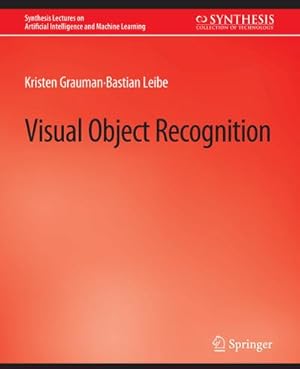springer international publishing apr 2011 (6 resultados)
ComentariosFiltros de búsqueda
Tipo de artículo
- Todos los tipos de productos
- Libros (6)
- Revistas y publicaciones (No hay ningún otro resultado que coincida con este filtro.)
- Cómics (No hay ningún otro resultado que coincida con este filtro.)
- Partituras (No hay ningún otro resultado que coincida con este filtro.)
- Arte, grabados y pósters (No hay ningún otro resultado que coincida con este filtro.)
- Fotografías (No hay ningún otro resultado que coincida con este filtro.)
- Mapas (No hay ningún otro resultado que coincida con este filtro.)
- Manuscritos y coleccionismo de papel (No hay ningún otro resultado que coincida con este filtro.)
Condición
- Todos los libros
- Nuevos (6)
- Antiguos o usados (No hay ningún otro resultado que coincida con este filtro.)
Encuadernación
- Todas
- Tapa dura (No hay ningún otro resultado que coincida con este filtro.)
- Tapa blanda (6)
Más atributos
- Primera edición (No hay ningún otro resultado que coincida con este filtro.)
- Firmado (No hay ningún otro resultado que coincida con este filtro.)
- Sobrecubierta (No hay ningún otro resultado que coincida con este filtro.)
- Con imágenes (6)
- No impresión bajo demanda (No hay ningún otro resultado que coincida con este filtro.)
Gastos de envío gratis
- Envío gratis a España (No hay ningún otro resultado que coincida con este filtro.)
Valoración de los vendedores
-
Science Fiction Prototyping
Publicado por Springer International Publishing Apr 2011, 2011
ISBN 10: 3031006682 ISBN 13: 9783031006685
Librería: BuchWeltWeit Ludwig Meier e.K., Bergisch Gladbach, Alemania
Taschenbuch. Condición: Neu. This item is printed on demand - it takes 3-4 days longer - Neuware -Science fiction is the playground of the imagination. If you are interested in science or fascinated with the future then science fiction is where you explore new ideas and let your dreams and nightmares duke it out on the safety of the page or screen. But what if we could use science fiction to do more than that What if we could use science fiction based on science fact to not only imagine our future but develop new technologies and products What if we could use stories, movies and comics as a kind of tool to explore the real world implications and uses of future technologies today Science Fiction Prototyping is a practical guide to using fiction as a way to imagine our future in a whole new way. Filled with history, real world examples and conversations with experts like best selling science fiction author Cory Doctorow, senior editor at Dark Horse Comics Chris Warner and Hollywood science expert Sidney Perkowitz, Science Fiction Prototyping will give you the tools you need tobegin designing the future with science fiction.The future is Brian David Johnson's business. As a futurist at Intel Corporation, his charter is to develop an actionable vision for computing in 2021. His work is called 'future casting'-using ethnographic field studies, technology research, trend data, and even science fiction to create a pragmatic vision of consumers and computing. Johnson has been pioneering development in artificial intelligence, robotics, and reinventing TV. He speaks and writes extensively about future technologies in articles and scientific papers as well as science fiction short stories and novels (Fake Plastic Love and Screen Future: The Future of Entertainment, Computing and the Devices We Love). He has directed two feature films and is an illustrator and commissioned painter.Table of Contents: Preface / Foreword / Epilogue / Dedication / Acknowledgments / 1. The Future Is in Your Hands / 2. Religious Robots and Runaway Were-Tigers: A Brief Overview ofthe Science and the Fiction that Went Into Two SF Prototypes / 3. How to Build Your Own SF Prototype in Five Steps or Less / 4. I, Robot: From Asimov to Doctorow: Exploring Short Fiction as an SF Prototype and a Conversation With Cory Doctorow / 5. The Men in the Moon: Exploring Movies as an SF Prototype and a Conversation with Sidney Perkowitz / 6. Science in the Gutters: Exploring Comics as an SF Prototype and a Conversation With Chris Warner / 7. Making the Future: Now that You Have Developed Your SF Prototype, What's Next / 8. Einstein's Thought Experiments and Asimov's Second Dream / Appendix A: The SF Prototypes / Notes / Author Biography 244 pp. Englisch.
-
Storing Clocked Programs Inside DNA
Publicado por Springer International Publishing Apr 2011, 2011
ISBN 10: 3031006690 ISBN 13: 9783031006692
Librería: BuchWeltWeit Ludwig Meier e.K., Bergisch Gladbach, Alemania
Taschenbuch. Condición: Neu. This item is printed on demand - it takes 3-4 days longer - Neuware -In the history of modern computation, large mechanical calculators preceded computers. A person would sit there punching keys according to a procedure and a number would eventually appear. Once calculators became fast enough, it became obvious that the critical path was the punching rather than the calculation itself. That is what made the stored program concept vital to further progress. Once the instructions were stored in the machine, the entire computation could run at the speed of the machine. This book shows how to do the same thing for DNA computing. Rather than asking a robot or a person to pour in specific strands at different times in order to cause a DNA computation to occur (by analogy to a person punching numbers and operations into a mechanical calculator), the DNA instructions are stored within the solution and guide the entire computation. We show how to store straight line programs, conditionals, loops, and a rudimentary form of subroutines.To achieve this goal, the book proposes a complete language for describing the intrinsic topology of DNA complexes and nanomachines, along with the dynamics of such a system. We then describe dynamic behavior using a set of basic transitions, which operate on a small neighborhood within a complex in a well-defined way. These transitions can be formalized as purely syntactical functions of the string representations.Building on that foundation, the book proposes a novel machine motif which constitutes an instruction stack, allowing for the clocked release of an arbitrary sequence of DNA instruction or data strands. The clock mechanism is built of special strands of DNA called ''tick'' and ''tock.'' Each time a ''tick'' and ''tock'' enter a DNA solution, a strand is released from an instruction stack (by analogy to the way in which as a clock cycle in an electronic computer causes a new instruction to enter a processing unit). As long as there remain strands on the stack, the next cycle will release a new instruction strand. Regardless of the actual strand or component to be released at any particular clock step, the ''tick'' and ''tock'' fuel strands remain the same, thus shifting the burden of work away from the end user of a machine and easing operation. Pre-loaded stacks enable the concept of a stored program to be realized as a physical DNA mechanism.A conceptual example is given of such a stack operating a walker device. The stack allows for a user to operate such a clocked walker by means of simple repetition of adding two fuel types, in contrast to the previous mechanism of adding a unique fuel -- at least 12 different types of strands -- for each step of the mechanism.We demonstrate by a series of experiments conducted in Ned Seeman's lab that it is possible to ''initialize'' a clocked stored program DNA machine. We end the book with a discussion of the design features of a programming language for clocked DNA programming. There is a lot left to do.Table of Contents: Introduction / Notation / A Topological Description of DNA Computing / Machines and Motifs / Experiment: Storing Clocked Programs in DNA / A Clocked DNA Programming Language 76 pp. Englisch.
-
Visual Object Recognition
Publicado por Springer International Publishing Apr 2011, 2011
ISBN 10: 3031004256 ISBN 13: 9783031004254
Librería: BuchWeltWeit Ludwig Meier e.K., Bergisch Gladbach, Alemania
Taschenbuch. Condición: Neu. This item is printed on demand - it takes 3-4 days longer - Neuware -The visual recognition problem is central to computer vision research. From robotics to information retrieval, many desired applications demand the ability to identify and localize categories, places, and objects. This tutorial overviews computer vision algorithms for visual object recognition and image classification. We introduce primary representations and learning approaches, with an emphasis on recent advances in the field. The target audience consists of researchers or students working in AI, robotics, or vision who would like to understand what methods and representations are available for these problems. This lecture summarizes what is and isn't possible to do reliably today, and overviews key concepts that could be employed in systems requiring visual categorization. Table of Contents: Introduction / Overview: Recognition of Specific Objects / Local Features: Detection and Description / Matching Local Features / Geometric Verification of Matched Features / Example Systems: Specific-Object Recognition / Overview: Recognition of Generic Object Categories / Representations for Object Categories / Generic Object Detection: Finding and Scoring Candidates / Learning Generic Object Category Models / Example Systems: Generic Object Recognition / Other Considerations and Current Challenges / Conclusions 184 pp. Englisch.
-
Pragmatic Electrical Engineering
Publicado por Springer International Publishing Apr 2011, 2011
ISBN 10: 3031798333 ISBN 13: 9783031798337
Librería: BuchWeltWeit Ludwig Meier e.K., Bergisch Gladbach, Alemania
Taschenbuch. Condición: Neu. This item is printed on demand - it takes 3-4 days longer - Neuware -Pragmatic Electrical Engineering: Fundamentals introduces the fundamentals of the energy-delivery part of electrical systems. It begins with a study of basic electrical circuits and then focuses on electrical power. Three-phase power systems, transformers, induction motors, and magnetics are the major topics.All of the material in the text is illustrated with completely-worked examples to guide the student to a better understanding of the topics. This short lecture book will be of use at any level of engineering, not just electrical. Its goal is to provide the practicing engineer with a practical, applied look at the energy side of electrical systems. The author's ''pragmatic'' and applied style gives a unique and helpful ''non-idealistic, practical, opinionated'' introduction to the topic.Table of Contents: Basic Stuff / Power of the Sine / Three-Phase Power Systems / Transformers / Machines / Electromagnetics 200 pp. Englisch.
-
Systems Engineering
Publicado por Springer International Publishing Apr 2011, 2011
ISBN 10: 3031793358 ISBN 13: 9783031793356
Librería: BuchWeltWeit Ludwig Meier e.K., Bergisch Gladbach, Alemania
Taschenbuch. Condición: Neu. This item is printed on demand - it takes 3-4 days longer - Neuware -This book provides an overview of systems engineering, its important elements, and aspects of management that will lead in the direction of building systems with a greater likelihood of success. Emphasis is placed upon the following elements:- How the systems approach is defined, and how it guides the systems engineering processes- How systems thinking helps in combination with the systems approach and systems engineering- Time lines that define the life cycle dimensions of a system- System properties, attributes, features, measures and parameters- Approaches to architecting systems- Dealing with requirements, synthesis, analysis and cost effectiveness considerations- Life cycle costing of systems- Modeling, simulation and other analysis methods- Technology and its interplay with risk and its management- Systems acquisition and integration- Systems of systems- Thinking outside the box- Success and failure factors- Software engineering- Standards- Systems engineering managementTogether, these top-level aspects of systems engineering need to be understood and mastered in order to improve the way we build systems, as they typically become larger and more complex.Table of Contents: Definitions and Background / The Systems Approach / Systems Thinking / Key Elements of Systems Engineering / The Life Cycle Dimension / System Properties, Attributes and Features (PAFs) / Measures and Parameters / Architecting / Functional Decomposition / Requirements Engineering / Synthesis / Analysis / Cost-Effectiveness / Life Cycle Costing / Modeling and Simulation / Other Analysis Relationships / The Role of Technology / Risk Management / Testing, Verification, and Validation / Integration / Systems Engineering Management / Project Management / Software Engineering / Systems Acquisition / Systems of Systems / Thinking Outside the Box / Ten Failure Factors / A Success Audit / Standards 140 pp. Englisch.
-
Fin-Shape Thermal Optimization Using Bejan's Constuctal Theory
Publicado por Springer International Publishing Apr 2011, 2011
ISBN 10: 3031793323 ISBN 13: 9783031793325
Librería: BuchWeltWeit Ludwig Meier e.K., Bergisch Gladbach, Alemania
Taschenbuch. Condición: Neu. This item is printed on demand - it takes 3-4 days longer - Neuware -The book contains research results obtained by applying Bejan's Constructal Theory to the study and therefore the optimization of fins, focusing on T-shaped and Y-shaped ones. Heat transfer from finned surfaces is an example of combined heat transfer natural or forced convection on the external parts of the fin, and conducting along the fin. Fin's heat exchange is rather complex, because of variation of both temperature along the fin and convective heat transfer coefficient. Furthermore possible presence of more fins invested by the same fluid flow has to be considered.Classical fin theory tried to reduce the coupled heat transfer problem to a one-dimensional problem by defining an average temperature of the fin and writing equations using this parameter. However, it was shown that this approach cannot be used because of the effects of two-dimensional heat transfer, especially in the presence of short fins. CFD codes offer the possibility to consider bi-dimensional (and more generally, three-dimensional) effects and then a more real approach to the physic phenomena of finned surface's heat exchange.A commercial CFD code was used to analyse the case of heat exchange in presence of T-shaped fins, following an approach suggested by Bejan's Constructal Theory. The comparative results showed a significant agreement with previous research taken as a reference, and this result allows for the application of this approach to a wider range of systems. T-shaped optimized fin geometry is the starting point for further research.Starting from the optimal results (T-shape optimized fins), we show the trend of the assessment parameter (the dimensionless conductance) in function of the angle a between the two horizontal arms of the fin. A value for a, 90° < a < 180° capable of a higher value of the dimensionless conductance, has not been found. The thermal efficiency showed a significant increase of this parameter, especially for values of a smaller than 100°. Thus, a new definition of optimisation is achieved by introducing the fundamental ''space factor.'' The present work unifies the ''classic'' definitions of optimisation and efficiency in a new general performance criterion, opening a new perspective on multi-fin systems.The last chapter deals with a brief overview on Bejan's Constructal Theory. It explains either tree-shape natural flows or other geometric form in nature and engineering, applying the principle of performance maximization. The Constructal principle also recognizes that a new good form comes to another previous good form which serve the same objective and have the same constraints. Changes in configuration are dynamic, thus a time arrow is then associated to the evolution in system's configuration.Table of Contents: General Introduction / General Overview on Heat Transfer / Conservation Equations / Dimensionless group / Units and conversion factors / Overview of heat transfer on extended surfaces / State of the art in the T-Shaped Fins / Thermal exchange basis / T-Shaped fins / Y-Shaped fins / Modular systems of Y-Shaped fins / Heat removal vs Pressure drops / Conclusions 220 pp. Englisch.







